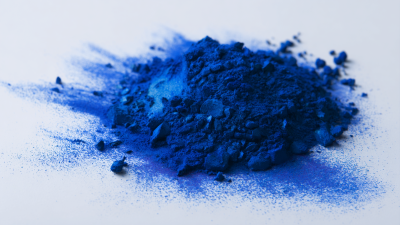In the competitive landscape of manufacturing and finishing industries, mastering powder coating techniques can significantly elevate a business's profile and productivity. According to a recent report by Smithers Pira, the global powder coatings market is anticipated to reach USD 19.52 billion by 2027, driven by increasing demand across automotive, architectural, and consumer goods sectors. This surge underscores the necessity for businesses to refine their powder coating processes to enhance durability, sustainability, and aesthetic appeal. With a growing focus on eco-friendly solutions, powder coating has emerged as a preferred choice, providing a healthier alternative to traditional liquid coatings. As industry professionals strive to maintain a competitive edge, adopting best practices in powder coating techniques becomes critical. In this blog, we will explore seven essential tips for mastering powder coating, helping you not only to improve your application methods but also to ensure consistent high-quality finishes that meet market demands.

Understanding the basics of powder coating is crucial for achieving business success, particularly in a market where competition is intensifying. Quality is often determined by unseen factors, such as the properties of polymer powders used in the coating process. Businesses should prioritize sourcing high-quality materials, which can significantly impact the durability and finish of the final product. By leveraging innovative techniques like the electrostatic powder coating process, companies can enhance their operational efficiency and produce superior results.
Moreover, adapting to the evolving needs of the industry is essential. Recent advancements, like mobile powder coating systems, provide flexibility to a range of users from smaller job shops to larger industrial operations. This expansion in capabilities not only fosters growth but also opens new avenues for customer engagement. Embracing these modern practices positions companies to thrive even in fluctuating markets while ensuring they meet the unique needs of their clients effectively.
When it comes to mastering powder coating techniques in your business, having the right equipment is essential for achieving high-quality finishes. A reliable powder coating system typically includes a spray gun, a recovery booth, and an oven for curing. Investing in a quality powder coating gun will ensure an even application, while a recovery booth helps to collect excess powder, minimizing waste and creating a cleaner workspace.
One critical tip for effective powder coating is to maintain a consistent voltage and air pressure on your spray gun. This consistency helps ensure a uniform coating that adheres properly to the surface. Additionally, proper surface preparation cannot be stressed enough; cleaning and degreasing the items to be coated will greatly enhance adhesion and the overall finish.
Another important aspect is temperature control during the curing process. Make sure to monitor the oven's temperature closely, as under-curing can lead to poor durability and adhesion, while over-curing may cause discoloration. By focusing on these essential tips and having the right equipment, you can elevate your powder coating business to new heights.

Preparing surfaces effectively is a critical step in achieving optimal powder coating outcomes. According to a report by the Powder Coating Institute, nearly 70% of coating failures can be traced back to inadequate surface preparation. This underscores the importance of meticulous surface cleaning and priming. The most common methods for surface preparation include sandblasting, chemical stripping, and using mechanical abrasion techniques. Each of these methods serves to remove contaminants such as rust, oil, and old paint, ensuring that the substrate is clean and free from defects.
Moreover, the surface profile plays a significant role in adhesion. The recommended profile for optimal adhesion is typically between 2 to 4 mils, as suggested by research from the American Coating Association. Achieving this surface roughness can enhance the mechanical interlock of the powder coating, resulting in a tougher and more durable finish. To verify the effectiveness of your preparation methods, conducting adhesion tests post-coating can provide valuable insights, allowing for adjustments to be made in the future. By understanding and implementing these surface preparation techniques, businesses can significantly improve their powder coating results, leading to increased customer satisfaction and reduced rework costs.
This chart illustrates the key factors influencing the success of powder coating techniques. The data is based on industry insights regarding surface preparation steps crucial for optimal outcomes.
When venturing into the world of powder coating, it's critical to steer clear of common mistakes that can jeopardize the quality of your work. One prevalent error is insufficient surface preparation. Any contaminants like dust, oil, or rust can prevent the powder from adhering properly, resulting in a subpar finish. High-quality powder coating begins with a clean substrate; therefore, take the time to thoroughly prepare surfaces by cleaning and sometimes even sanding before application.

Maintaining quality control in powder coating operations is imperative, especially considering the rapid growth projected in the coating equipment market, which is expected to reach USD 35.66 billion by 2033. This expansion is heavily driven by the automotive industry, highlighting the importance of superior coating processes. As automotive assembly plants in the U.S. produce over 13 million vehicles annually, the necessity for consistent quality and efficiency in powder coating has never been more critical.
To ensure high-quality output, manufacturers should adopt advanced technologies that promote smarter and more efficient operations. For instance, the introduction of innovative tools aimed at reducing manufacturing costs and waste can substantially lower the manufacturing footprint of powder coating processes. Moreover, understanding and mitigating the causes of coating defects is crucial. Insights from experts indicate that several factors, including equipment maintenance and proper environmental controls, play vital roles in achieving optimal results. Implementing these strategies can significantly enhance product quality and operational efficiency in your powder coating business.






